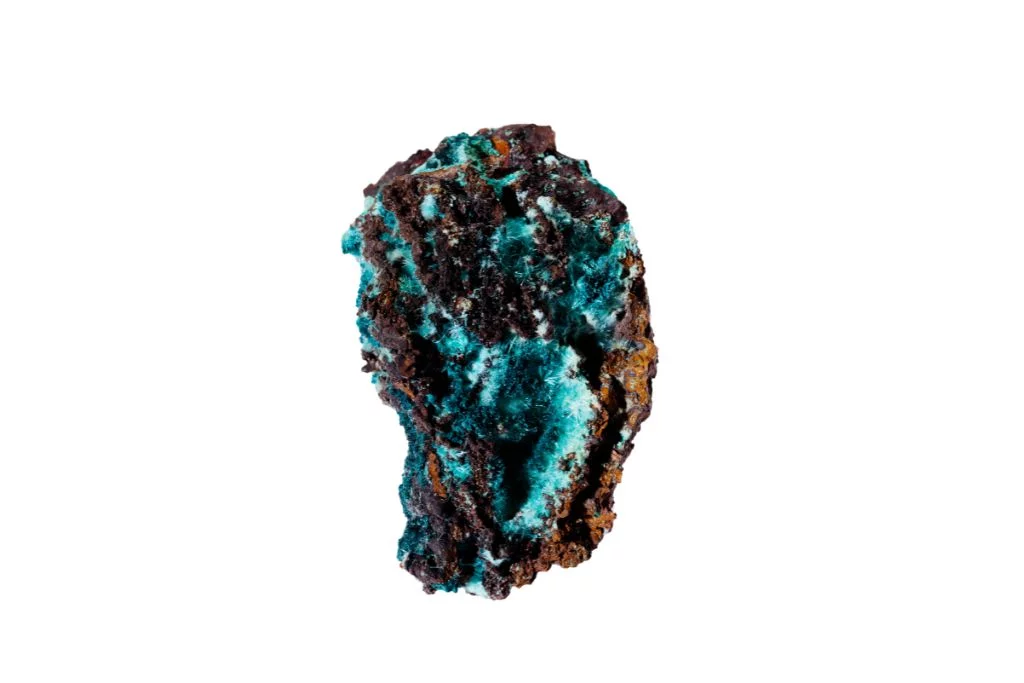Color and Appearance of Aurichalcite
Aurichalcite is a striking mineral that captivates with its distinctive appearance. This zinc and copper hydroxide carbonate typically exhibits a beautiful pale blue to blue-green hue, reminiscent of serene tropical waters. The color can vary in intensity, sometimes appearing almost white or taking on a more vibrant turquoise shade. This variation in color is largely due to the ratio of zinc to copper in its composition.
Crystal Structure and Form
One of the most notable characteristics of Aurichalcite is its delicate, needle-like crystal structure. These fine, acicular crystals often form in radiating or divergent clusters, creating a soft, fuzzy appearance. In some specimens, the crystals may be so fine that they resemble silky fibers or delicate tufts. This unique structure gives Aurichalcite a fragile and somewhat fragile nature, making it a favorite among careful collectors.
Unique Features and Associations
Aurichalcite frequently occurs as crusts or coatings on other minerals, particularly those found in the oxidized zones of zinc and copper deposits. It’s not uncommon to find Aurichalcite associated with minerals like Malachite, Azurite, or Smithsonite, creating stunning natural compositions. The contrast between Aurichalcite’s pale blue hues and the deeper greens or blues of its mineral companions can be visually striking.
Physical Properties
Despite its delicate appearance, Aurichalcite possesses some interesting physical properties. It has a pearly to vitreous luster, which can give it a subtle shimmer when light reflects off its surface. The mineral is relatively soft, with a Mohs hardness of 1.5 to 2, contributing to its fragile nature. When viewed under ultraviolet light, some specimens of Aurichalcite may exhibit a weak fluorescence, adding another layer of intrigue to this fascinating mineral.
Historical and Cultural Significance of Aurichalcite
Aurichalcite, a rare zinc and copper carbonate mineral, has limited historical and cultural significance due to its relative scarcity. However, it has gained popularity among mineral collectors and metaphysical enthusiasts in recent years. The mineral’s striking blue-green color and delicate needle-like crystal structure make it a prized specimen for collectors and mineral enthusiasts.
Metaphysical Associations
In the realm of crystal healing and metaphysics, Aurichalcite is believed to possess various beneficial properties. It is often associated with enhanced communication, emotional balance, and spiritual growth. Many practitioners claim that Aurichalcite can help alleviate stress and anxiety, promoting a sense of calm and inner peace. Some also attribute properties of mental clarity and improved focus to this mineral.
Common Uses and Applications
While Aurichalcite is not widely used in industrial applications, it has found a niche in alternative healing practices and decorative purposes. Crystal healers may incorporate Aurichalcite into their sessions, using it to balance energies and promote emotional well-being. The mineral is also popular among meditation practitioners, who believe it can enhance their spiritual experiences and facilitate a deeper connection with higher consciousness.
Believed Benefits
Proponents of crystal healing suggest that Aurichalcite may offer several benefits, including improved communication skills, enhanced intuition, and a greater sense of personal empowerment. Some believe it can help in releasing negative emotions and past traumas, facilitating emotional healing. Additionally, Aurichalcite is thought to stimulate creativity and inspire new ideas, making it popular among artists and writers seeking inspiration.

